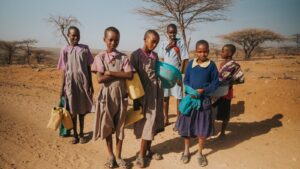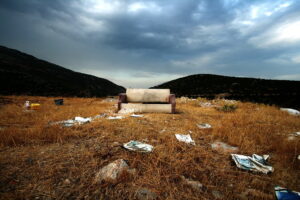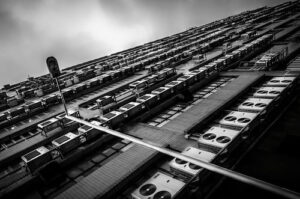Ad: What’s causing wildfires and how to build resistance
Fire can be a devastating force, and this is particularly true in the case of wildfires which rip through natural areas, including grasslands, forests, prairies, and more. In addition, the often rural locations of wildfires can make them harder to stop, leading to irreversible damage.
While wildfires can occur naturally, most are caused by human carelessness or intent. These events can be extremely damaging and have long-term knock-on effects beyond the fire damage itself. Therefore, we must take the time to learn more about what causes wildfires to happen so that we can limit subsequent destruction caused by forest fires.
The Katingan Mentaya Project is a carbon finance program focused on fighting global warming by protecting the carbon-rich peatland habitats of central Kalimantan in Indonesia. Years of working to safeguard this area have strengthened our understanding of wildfires, why they happen, and what we can do to prevent them, minimise their impact, and reduce global carbon emissions and greenhouse gases.

The rise of wildfires
Studies suggest that there has already been an increase in wildfires, if not in frequency, then in severity. For instance, the United States Environmental Protection Agency (EPA) found that the 10 wildfires with the largest acreage burnt and worst severity of damage had been recorded after 2004. These insights suggest that, even if wildfires have not yet increased in frequency, they have already worsened.
Unfortunately, global warming estimates suggest that it is not just the size of wildfires that are getting worse. Instead, forecasts indicate that more wildfires will occur, with climate change altering the world’s weather conditions.
Wildfire smoke can result in a huge amount of air pollution. Contributing to greenhouse gas emissions, wildfire smoke lowers air quality, putting people and animals, including critically endangered species, at risk of wildfire smoke exposure.
A United Nations Environmental Program (UNEP) report predicts that wildfires will rise by 50% in under 80 years. Even areas previously considered very low-risk, like the Antarctic, are facing a heightened wildfire risk, at least partially because of global warming.
Why are wildfires increasing?
Heatwaves and droughts across Europe, in Portugal, France, Greece, and Italy, have left citizens struggling and displaced. In addition, heatwaves and wildfires have raged in the US, Canada, Australia, Indonesia, and many other places. Many believe the rise of wildfires is caused by global warming.
Climate change
The growing number of wildfires is intrinsically linked to climate change, with each intensifying the other.
Global warming is causing unseasonal and unprecedented warm weather and changes in rainfall which contribute to the increase in wildfires globally. Wildfires can occur without human activity if conditions are scorching and dry. Spontaneous combustion can occur if enough flammable material is present, for instance, if an area of undergrowth is covered in twigs and dry biomass.
Projections in the West of America suggest that an average increase of just 1°C a year could result in an estimated 600% increase in areas burned by wildfires. This prediction is particularly worrying given that temperatures have risen by approximately 1.7°C a century since 1970.
The more wildfires happen, the more carbon dioxide is released into the atmosphere. In turn, higher carbon dioxide emissions and greenhouse gases trap heat inside our atmosphere, contributing to climate change and rising temperatures.
Other factors
Other naturally occurring weather phenomena, like El Niño, also worsen the spread of wildfires. El Niño is a natural weather cycle that takes place every 2 to 7 years. The weather event can cause higher winds and lower rainfall in regions across Latin America and Southeast Asia. Less rainfall means drier vegetation that catches alight more easily, and wind helps supply wildfires with constant oxygen while transporting embers to new paths.
And it’s not just weather conditions that are a concern. We must also worry about how wildfires are starting.
While naturally occurring wildfires are a concern, they are not the primary problem. Most wildfires start because of human activity. Some forest fires are lit accidentally, whereas others are started intentionally before growing out of control. With the right conditions, a fire can spread incredibly fast, making it near impossible to stop or get in check. Early warning systems could help prevent this.
Additionally, how we use land and manage our forested areas can significantly impact wildfires.
Agricultural expansion, particularly in tropical forest areas, has led to areas of forest being cleared. Fire is one of the most common methods to clear land for pasture and crops. Droughts worsen the already risky process of deforestation via fire and can be a result of climate change and excessive greenhouse gases in the atmosphere. Dry land and vegetation mean the fire can spread faster, jumping from one area to another and advancing into surrounding forests, releasing more carbon dioxide.
How can we build resistance to wildfires?
With wildfires becoming increasingly frequent, spreading further, and causing more damage, the world must find ways to combat the issue.
In various regions of the world, experts are trying to discourage developers from building in fire-prone locations and encouraging builders to use fire-resistant designs and materials. For example, trees and structures are being designed with breaks to make it more difficult for fire to jump from one to another.
Firefighting forces are also receiving more resources to fight wildfires more effectively and help people prevent forest fires from occurring. One standard recommendation to those in fire-prone areas is to remove dead and dry vegetation, including trees, as these can further fuel wildfires.
Where it is not always possible to stop wildfires from starting, we can take action to reduce the likelihood of a wildfire causing excessive damage. For example, Katingan Mentaya Project has set up a forest and land fire post in Babirah village, Indonesia. The posts are strategically located on the edge of the peat land and act as early warning systems. Villagers can carry out prevention strategies, spotting peatland wildfire smoke, and the posts are used to store firefighting equipment in case of a wildfire.
Of course, long-term solutions are also vital. It is better to prevent wildfires from happening than to try and stop their spread.
For instance, sustainable development projects like the Agroecology Farming Program encourage farmers to take a burn and chemical-free approach to land clearing. This program has already assisted 800 Indonesian farmers who own 780 hectares of land combined. Not only does this program help prevent the practice of clearing trees with fire, which can lead to out-of-control large wildfires, but it also helps protect the soil so that farmers can continue to use their land to grow crops. So far, the project has been a success, meeting sustainable development goals.
Healthier soil, not burnt by fire, and living crops and vegetation all mean moisture. Areas that aren’t already dry are far less vulnerable to fire and can help reduce the risk of a wildfire rapidly spreading across forested or once-forested areas.
Overall, the more work we can do in mitigating climate change, the healthier our natural environment and the lower the risk of wildfires.
Photo provided by Katingan Mentaya Project















